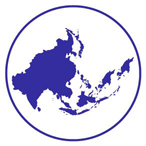Presentation Title
Representing the People: Chinese Capitalists in Early PRC Diplomacy
Location
RCC Small Ballroom
Start Date
12-10-2013 3:45 PM
End Date
12-10-2013 5:15 PM
Abstract
Even as it “leaned to one side” to incline toward the socialist camp during the 1950s, China continued to cultivate relationships across a world divided by the Cold War. Chinese capitalists became a part of bridging differences, especially with the People¹s Republic’s non-communist counterparts. They helped present the New China with an old (or at least reassuring and familiar) face. As hosts, they personally received important foreign guests to the country in their businesses and homes, showing directly how the national bourgeoisie lived on. As featured subjects in the press, they did much the same, showcasing the persistence and coexistence of classes possible in China to those who only traveled there virtually, through the pages of exported propaganda material.
This paper will follow the use of Chinese capitalists through the early People¹s Republic as both individuals and symbols to show both how parts of the pre-revolutionary society and culture were Not rejected but instead retooled, embraced, and emphasized in presenting China to the world, as well as how semi-formal people-to-people (“track two”) diplomacy formed an important part of the PRC¹s foreign relations arsenal from its earliest days through the 1960s.
Representing the People: Chinese Capitalists in Early PRC Diplomacy
RCC Small Ballroom
Even as it “leaned to one side” to incline toward the socialist camp during the 1950s, China continued to cultivate relationships across a world divided by the Cold War. Chinese capitalists became a part of bridging differences, especially with the People¹s Republic’s non-communist counterparts. They helped present the New China with an old (or at least reassuring and familiar) face. As hosts, they personally received important foreign guests to the country in their businesses and homes, showing directly how the national bourgeoisie lived on. As featured subjects in the press, they did much the same, showcasing the persistence and coexistence of classes possible in China to those who only traveled there virtually, through the pages of exported propaganda material.
This paper will follow the use of Chinese capitalists through the early People¹s Republic as both individuals and symbols to show both how parts of the pre-revolutionary society and culture were Not rejected but instead retooled, embraced, and emphasized in presenting China to the world, as well as how semi-formal people-to-people (“track two”) diplomacy formed an important part of the PRC¹s foreign relations arsenal from its earliest days through the 1960s.

Comments
Presentation is included in Panel 21: Rethinking International Relations in Modern China and the Cold War Period